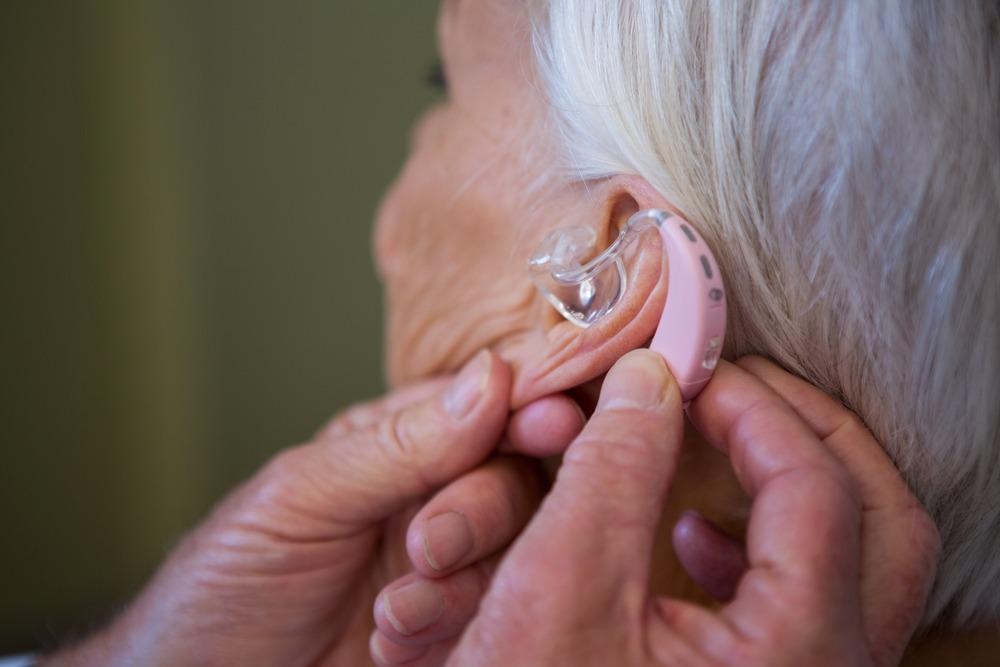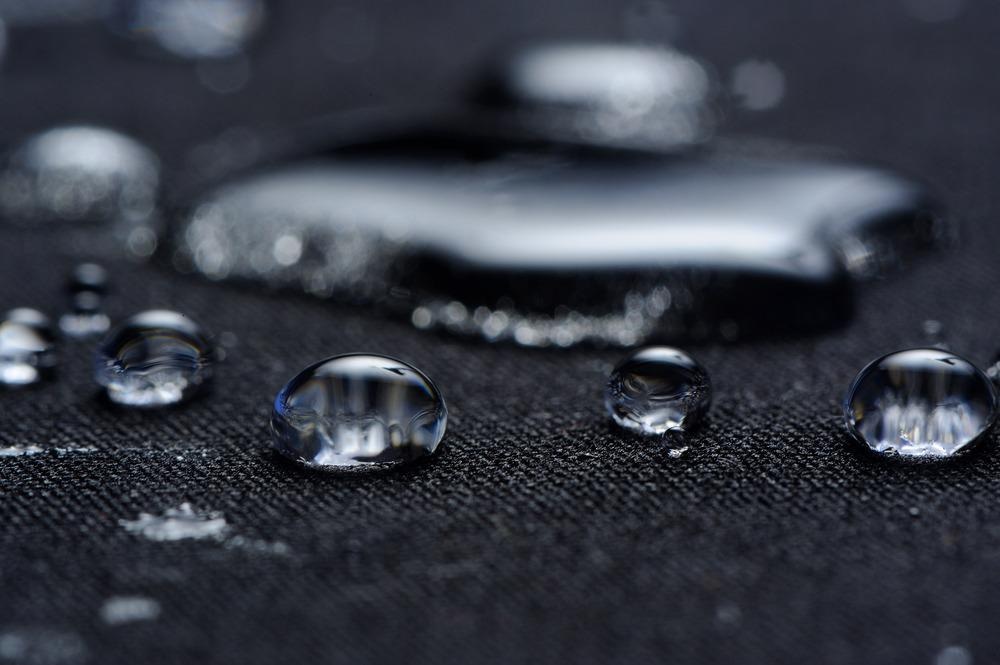Hearing aids are essential and delicate medical devices that are exposed to various rough conditions such as water penetration, increased moisture, and build-up of cerumen (earwax). Additionally, varied biochemical events of the human body promote battery contact corrosion and reduce consistency. Nanotechnology has offered a solution to these problems, which could enhance the performance and longevity of this hearing equipment.

Image Credit: wavebreakmedia/Shutterstock.com
Nanotechnology has been used in many commercial products. Naturally occurring nanostructures have also inspired the development of various goods possessing unique characteristics, such as antifog, water repellent, scratch-resistant, and self-cleaning abilities. Hearing aid manufacturers and nanotechnology-based liquid-repellent developers work hand in hand to design novel products that could enhance the performance and durability of hearing aids.
How are Hearing Aids Affected When Exposed to Harsh Conditions?
Hearing aids are frequently subjected to moisture, earwax, body oil, and other foreign materials, causing their functionality and performance to suffer. Furthermore, these conditions result in the obstruction of acoustic paths (i.e., blockage in the acoustic ports and pathways), corrosion and leakage of batteries, impairment of transducers and mechanical components, and faulty circuits. Mostly, hearing aids become damaged because of the ingress of foreign materials.
Scientists stated that the problems associated with hearing aids could increase in the future, as recently, more children with active lifestyles are using this device.
Traditional Solutions to Hearing Aids Issues
Several methods have been implemented to prevent ingress of foreign materials and, thereby, protect hearing aids. Some of the strategies include the use of acoustically transparent mesh with water repellent properties. Foams are also applied in front of the acoustic ports to shield the transducers. To prevent moisture ingress, certain hearing aids feature an O-ring type seal around the battery section and seams of the case.
Some of the traditional methods have proved to be ineffective and unfavorable. For example, the acoustic performance of the hearing aids could be compromised if the openings of the mesh or screens are blocked over time by foreign materials. Such occurrences demand frequent replacement of the water repellent protective mesh. Also, the introduction of an O-ring in the hearing instrument makes the design more complicated and results in an unfavorable size increase of the instrument.
Considering these problems, there is a need to develop effective strategies to overcome the drawbacks of the traditional methods to protect hearing instruments from adverse conditions.
How can these Drawbacks be Overcome?
One of the effective strategies lies in applying thin water repellent coatings, which are more efficient than the traditional methods. Researchers found that the water repellent phenomenon has been used by many plants, for example, lotus leaves, which possess excellent non-wetting surfaces with a self-cleaning mechanism. This property is commonly referred to as the "lotus effect" or "Cassie state", which is caused by the ordered roughness of the leaf surface and the inherent hydrophobicity of the waxy layer present on the leaf's surface.
The two factors on which water repellent properties depend are surface energy and surface morphology. The liquid-solid surface interface is affected by surface energy by influencing the attractive forces between the liquid and solid at the molecular level.
Hydrophobicity, defined as the degree of water repellency of a surface, can be evaluated by measuring the contact angle of a small droplet of water present on a level surface. Generally, a surface is considered hydrophobic if the water contact angle (WCA) is between 90◦ and 150◦ and superhydrophobic if WCA is above 150◦.
The lotus effect can be artificially introduced on a structure by applying nanoparticles and other nanotechnology-based treatments. For this reason, hearing aid manufacturers have used nanotechnology to develop effective omniphobic nanocoatings to protect the acoustic performance and longevity of the hearing aids.

Image Credit: Imageman/Shutterstock.com
Nanotechnology and Hearing Aids
Omniphobic nanocoatings offer surface resistance to both water and oil wetting, ideal for preventing ingress from several contaminants.
Recently, this nanotechnology has been used for the development of a superhydrophobic nanocoating named HydraShield2. In addition to imparting hydrophobic properties, this nanocoating also offers an oleophobic property that effectively repels oily substances such as earwax.
HydraShield2 is delivered via the supramolecular vapor deposition (SVD) method. The total thickness of this coating is around 100nm.
As this nanocoating showed a comprehensive result in lab tests and human studies, hearing aid manufacturers believe HydraShield2 could effectively solve existing functionality and longevity issues. More specifically, this could mitigate the deposition problems of oily and other substances and enhance the durability and performance of hearing aids.
P2i's Nanocoating Technology
P2i is a global leader in liquid repellent nanocoating technology, founded in 2004, developing environmentally friendly, water-proof coatings to protect medical equipment over the last decade. Currently, P2i is associated with many European and Japanese hearing aid manufacturers, who dominate approximately two-thirds of the overall hearing aid market.
Recently, P2i launched a new nanocoating solution to tackle the problems associated with hearing aids. This product would help manufacturers of medical devices to comply with the newly updated regulation that has restricted the use of perfluorooctanoic acid (PFOA), its salts, and other PFOA-related compounds. They patented the pulsed plasma deposition process, which supports hydrophobic nanocoatings on entire 3D products, i.e., on the inside and outside. This technology offers maximum liquid repellency and protects the hearing aids from humidity, sweat, body oils, weather, splashes, spills, and accidental submersion.
Continue reading: Applications of Nanotechnologies in Brain Implants
References and Further Reading
P2i. (2020) P2i's New Coating Solution For Hearing Aids Will Help Manufacturers Comply With New PFOA Regulations.[Online] Available at: https://www.p2i.com/2020/09/09/p2is-new-coating-solution-for-hearing-aids-will-help-manufacturers-comply-with-new-pfoa-regulations/
People Hearing Better. (2016) How the little world of nanotechnology protects hearing aids. [Online] Available at: https://secondsensehearing.com/
Lin, W., (2015) Improve reliability of hearing instruments using nano technology. 2015 International Conference on Manipulation, Manufacturing and Measurement on the Nanoscale (3M-NANO),. Available at: https://doi.org/10.1109/3M-NANO.2015.7425466
Disclaimer: The views expressed here are those of the author expressed in their private capacity and do not necessarily represent the views of AZoM.com Limited T/A AZoNetwork the owner and operator of this website. This disclaimer forms part of the Terms and conditions of use of this website.